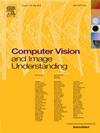RS3Lip: Consistency for remote sensing image classification on part embeddings using self-supervised learning and CLIP
IF 4.3
3区 计算机科学
Q2 COMPUTER SCIENCE, ARTIFICIAL INTELLIGENCE
引用次数: 0
Abstract
Tackling domain and class generalization challenges remains a significant hurdle in the realm of remote sensing (RS). Recently, large-scale pre-trained vision-language models (VLMs), exemplified by CLIP, have showcased impressive zero-shot and few-shot generalization capabilities through extensive contrastive training. Existing literature emphasizes prompt learning as a means of enriching prompts with both domain and content information, particularly through smaller learnable projectors, thereby addressing multi-domain data challenges perceptibly. Along with this, it is observed that CLIP’s vision encoder fails to generalize well on the puzzled or corrupted RS images. In response, we propose a novel solution utilizing self-supervised learning (SSL) to ensure consistency for puzzled RS images in domain generalization (DG). This approach strengthens visual features, facilitating the generation of domain-invariant prompts. Our proposed RSLip, trained with small projectors featuring few layers, complements the pre-trained CLIP. It incorporates SSL and inpainting losses for visual features, along with a consistency loss between the features of SSL tasks and textual features. Empirical findings demonstrate that RSLip consistently outperforms state-of-the-art prompt learning methods across five benchmark optical remote sensing datasets, achieving improvements of at least by 1.3% in domain and class generalization tasks.
RS3Lip:基于自监督学习和CLIP的部分嵌入遥感图像分类一致性
解决领域和类的泛化挑战仍然是遥感领域的一个重大障碍。最近,以CLIP为例的大规模预训练视觉语言模型(VLMs)通过广泛的对比训练,展示了令人印象深刻的零射击和少射击泛化能力。现有文献强调提示学习是用领域和内容信息丰富提示的一种手段,特别是通过较小的可学习投影仪,从而可感知地解决多领域数据挑战。与此同时,我们观察到CLIP的视觉编码器不能很好地泛化困惑或损坏的RS图像。为此,我们提出了一种新的解决方案,利用自监督学习(SSL)来确保困惑的RS图像在域泛化(DG)中的一致性。这种方法增强了视觉特征,促进了域不变提示的生成。我们提出的RS3Lip,与具有少数层的小型投影仪训练,补充了预训练的CLIP。它结合了SSL和视觉特征的绘制损失,以及SSL任务的特征和文本特征之间的一致性损失。实证结果表明,RS3Lip在五个基准光学遥感数据集上始终优于最先进的提示学习方法,在领域和类别泛化任务上至少提高了1.3%。
本文章由计算机程序翻译,如有差异,请以英文原文为准。
求助全文
约1分钟内获得全文
求助全文
来源期刊

Computer Vision and Image Understanding
工程技术-工程:电子与电气
CiteScore
7.80
自引率
4.40%
发文量
112
审稿时长
79 days
期刊介绍:
The central focus of this journal is the computer analysis of pictorial information. Computer Vision and Image Understanding publishes papers covering all aspects of image analysis from the low-level, iconic processes of early vision to the high-level, symbolic processes of recognition and interpretation. A wide range of topics in the image understanding area is covered, including papers offering insights that differ from predominant views.
Research Areas Include:
• Theory
• Early vision
• Data structures and representations
• Shape
• Range
• Motion
• Matching and recognition
• Architecture and languages
• Vision systems
 求助内容:
求助内容: 应助结果提醒方式:
应助结果提醒方式:


